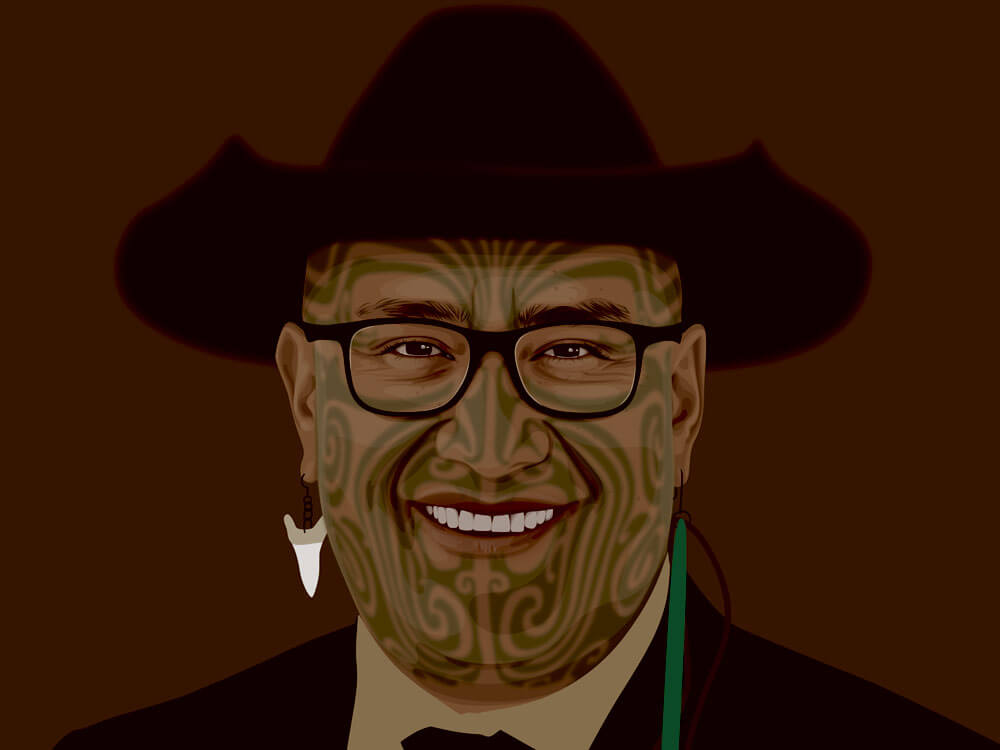Dec 7, 2020 Society
Morgan Godfery on what Labour’s parliamentary majority means for the left.
New Zealand is the most progressive country in the English-speaking world.
That might seem like a reach, and it’s certainly a claim that’s difficult to measure and verify, but in no other Anglophone country do the major progressive parties — in our case Labour, the Greens, and the Māori Party — command such a high legislative majority.
In October, almost 60% of voters went left, with National losing rural strongholds like Rangitata to Labour, the Greens picking up Auckland Central, and the Māori Party bringing in a list MP in co-leader and iwi chief Debbie Ngarewa-Packer. For the first time in more than a decade, Parliament hosts actual, literal Marxists like Ricardo Menéndez March. Even Labour, which is very much the ‘soft left’, put two leading members of the Kīngitanga, the 19th-century resistance movement to the Crown, in charge of that same Crown’s defence and foreign ministries.
That’s radical. Or, at least, it’s radical in gesture. No one would suggest that Defence Minister Peeni Henare or Foreign Minister Nanaia Mahuta are planning on turning the guns on the Crown. Instead, it’s a signal that Labour can do as it likes over the next three years without worrying about National’s attack lines (“Mahuta has no experience!”) or what Winston Peters might or might not allow.
In the 2017 term, Labour was careful to avoid offending National’s centrist voters — remembering Labour won a comparatively modest 37% of the vote in 2017 — and they were cautious of stepping on New Zealand First’s toes, too. This meant Prime Minister Jacinda Ardern took a capital gains tax off the table as a sop to centrist voters and sent cannabis legalisation to referendum on Peter’s say so. But, in 2020, the handbrakes are off. Does that mean the Prime Minister is about to unleash a leftist programme in the same spirit as, say, Michael Joseph Savage?
No. Ardern is already ruling out benefit increases this year, even though that’s precisely what her working group on welfare reform recommended. Tax reform remains off the table, too. Kiwibuild, the practical disaster but policy necessity, is still a dirty word that no Labour MP dare utter.
Instead, what we can expect is, well, more of the same. Some incentives here, some subsidies there. This is the thing about Jacinda Ardern: she came of age knowing mostly left defeats. And when her party did come to power — first in 1984 and then in 1999 — it did so after making peace with power. David Lange, Roger Douglas, and their fourth Labour government facilitated the largest wealth transfer since the first Labour Government, selling off the country’s assets to some of the richest individuals and managed funds in the world.
But where wealth ‘trickled down’ under the first Labour government with strong unions, a muscular welfare state, and high taxes ensuring working people took a greater share of the wealth they produced, wealth ‘bubbled up’ under the fourth Labour government with unions busted, welfare cut, and taxes slashed. When Helen Clark’s Labour Party came to power in 1999, they did little to reverse this.
But surely Jacinda Ardern is different? With a parliamentary majority and the highest preferred-prime-minister rating since polling began, she can do as she likes.
The trouble is it’s never been quite clear what she ‘likes’ politically, other than vague nods to kindness or relentless positivity. The Prime Minister cheery demeanour has always come before its political content. What does kindness look like, politically? Is relentless positivity a political programme? No and no.
Instead, the person to look to, at least when it comes to shaping policy over the next three years, is Finance Minister and Deputy Prime Minister, Grant Robertson. Labour’s number two has always had a firm grasp on what he and his party want to and can achieve. The wage subsidy, for example, was all Robertson combining his left instincts — a near universal payment for struggling workers, a cornerstone of all socialist policy — with a good nose for what business and the centre will and won’t accept. The wage subsidy stopped short, for example, of a universal basic income.
But this leaves one factor unaccounted for: the Greens and the Māori Party. 2020 was Labour’s election, yet the Greens did something no other minor party has ever done — increased their vote after a term in government — and the Māori Party did something only Winston Peters has ever managed — returned to Parliament after a term out of the House and in the wild.
The Māori Party’s Waiariki candidate, Rawiri Waititi, pulled off an extraordinary win, edging out Labour’s Tāmati Coffey and bringing in Ngarewa-Packer, the Te Tai Hauauru candidate. The risk for Labour is if left change doesn’t happen, it entrenches Waititi in Waiariki and risks other Māori electorates going the same way. After all, the Māori electorates vote overwhelmingly left — if the Māori electorates were in charge, cannabis would be legal, for example — and they can flip from term to term, as Waititi proved.
This is a risk for Labour because in close elections, like 2017, the Māori electorates are make or break. With this in mind the question for the next three years is this: does Labour prioritise it’s base — the left, Māori, and so on — or is it hostage to its new centrist majority?






